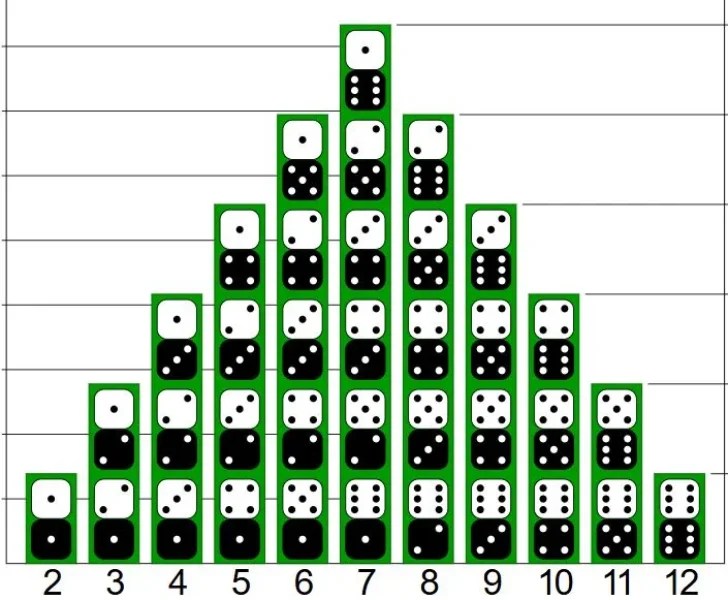
How Las Vegas and the Law of Large Numbers Simplify Statistics
Welcome to Topline Statistics! Las Vegas is my favorite city, and I enjoy using it to explain statistical concepts. Today, we’ll explore the Law of Large Numbers (LLN) and how it ensures fairness in craps, a popular game in Vegas. Let’s dive into how LLN makes outcomes predictable over many rolls.

What is the Law of Large Numbers?
The Law of Large Numbers is often the overlooked champion of statistics. It clarifies an important concept. If you perform more trials or experiments, the average of your results becomes closer to the expected value. Think of it as a way to even out random results over time.
Rolling Dice in Las Vegas: A Statistical Perspective
Picture yourself at a craps table in Las Vegas, surrounded by flashing lights and enthusiastic players. You roll two dice, hoping for a lucky streak. The outcome of one roll can be unpredictable—a 2 might pop up, or a 12 might show. It’s all part of the excitement.
But here’s where the Law of Large Numbers works its magic. If you roll those dice thousands of times, the results start to form a pattern. You will not see a chaotic mess of outcomes. The average sum of the dice converges towards the theoretical average. This average is 7. This is not due to any casino tricks, but rather the natural order of probability.

How LLN Keeps the Vegas Dice Fair
So why does the Law of Large Numbers matter in a Las Vegas setting? Let’s break it down:
- Predictable Averages: In a casino, the house edge is built into the game. LLN ensures that over many rolls, the average outcome aligns with the expected probabilities. This helps maintain fairness and transparency in games.
- Long-Term Trends: A single roll might be a wild ride. LLN ensures that over time, the dice outcomes will average out. This is why casinos can confidently advertise their odds—they’re based on large numbers of rolls.
- Risk Management: For casino operators, understanding LLN helps in managing the risk and ensuring that their games are fair. They use statistical models to set the house edge and ensure the games run smoothly.
The Vegas Connection: From Topline Statistics Blog Page
In my previous blog posts, I’ve written about various aspects of Las Vegas and how it relates to statistics. In “Las Vegas Strip Data,” I explored the true costs of staying in a hotel on the Las Vegas Strip. I analyzed these costs in depth. If you’re planning a vacation to Las Vegas or just curious, check it out!
Also, my post “A Statistician for Slot Machines” explains a Statistician’s role in helping casinos. They could increase playing time on slot machines. This is done by using an advanced statistical approach called “Design of Experiments” (DOE).
Law of Large Numbers Real-World Applications
The Law of Large Numbers (LLN) is more than just a theoretical concept; it’s a practical tool used across various fields:
Finance: Investors use LLN to predict long-term investment returns. By analyzing large amounts of market data, they can anticipate that the average return will stabilize over time. This analysis helps them make better investment decisions.
Insurance: Insurance companies rely on LLN to set accurate premiums and assess risks. By analyzing data from thousands of policyholders, they ensure that the average risk and claims costs are predictably manageable.
Product Research: In product research, LLN helps companies understand consumer preferences. Large sample surveys provide a reliable picture of market trends and customer feedback, guiding product development and marketing strategies.
Pharmaceuticals: In clinical trials, LLN is used to determine a drug’s effectiveness. By testing a large number of participants, researchers can confidently estimate the drug’s true efficacy. This estimation is crucial for regulatory approval and medical use.
In each of these examples, the LLN helps statisticians make reliable predictions and decisions based on extensive data.
Conclusion about Las Vegas and the Law of Large Numbers
Next time you roll the dice in Las Vegas, remember the Law of Large Numbers is at work. It makes sure that after many rolls, the results average out as expected. It helps keep the game fair by balancing out the randomness.
For further insights into how statistics influence different professions, please explore my additional blog posts. If you found this explanation informative, consider sharing it with others to continue the discussion.
Feel free to leave a comment or ask questions about how LLN affects various aspects of gaming and statistics. Don’t forget to explore my previous blogs on Las Vegas. They offer a deeper dive into the numbers behind the fun!
Discover more from Topline Statistics
Subscribe to get the latest posts sent to your email.

Are you drowning in data?
Let us help! Our experts will navigate, organize, and analyze your data, bringing forth clarity and actionable recommendations.
